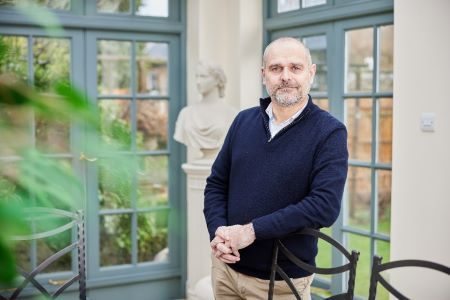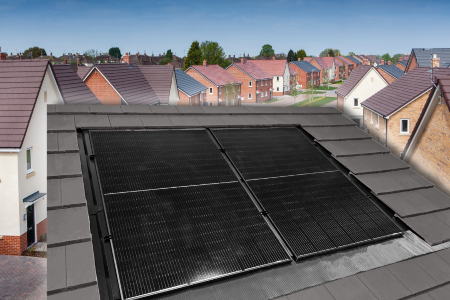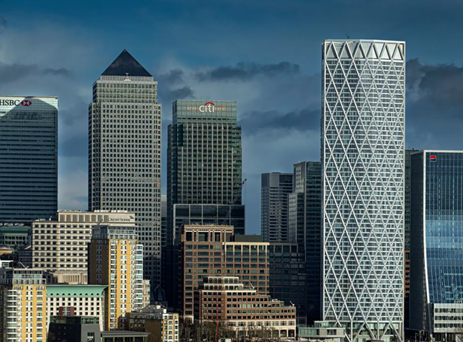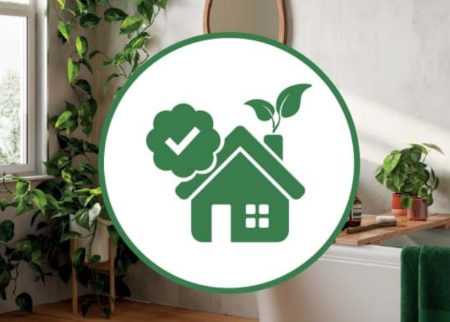Toby Marlow, Building and Construction team director at Haddonstone has revealed the company’s dedication and commitment to helping the environment.
The construction industry is one of the UK’s biggest contributors to carbon emissions and environmental pollution. How would you summarise Haddonstone’s commitment to sustainability?
Haddonstone is proudly committed to sustainability and we continually strive towards reducing our impact on both society and the environment. Sustainability policies are embedded across our production processes, including having protocols in place to avoid the use of hazardous substances and prevent the release of contaminants into the atmosphere or watercourses as well as onto land. All measures are carried out in accordance with Environment Agency regulations.
Are there any new initiatives which can be shown to be cutting Haddonstone’s environmental footprint?
As well as actively cutting power consumption through the use of low energy lighting, turning off equipment when not in use and switching to renewable sources, we use batch production wherever possible to reduce waste; and also employ ‘vapour curing’ instead of wasteful spraying alternatives to save water. Then there is an on-going project with Cranfield University. Initially, this involved assessing the carbon footprint of cast stone. This has resulted in efficiencies across our production and is helping us work towards becoming carbon neutral. Interestingly, a study has shown that one of our Haddonstone planters made with 20kG of dry mix counts as carbon neutral in just 25 months once filled with shrubs. We are now focusing on reducing the carbon footprint of cast stone, for example,finding an alternative to natural aggregates, an alternative to our traditional packaging and Portland cement. Most of the project focuses on reducing Greenhouse gas emissions which included other gases such as carbon monoxide, methane, nitrous oxides etc.
Are you working to reduce the carbon footprint of meeting your transport requirements?
We have made significant investment in building our own fleet of delivery lorries that utilise a state-of-the-art computer system. This enables our drivers to optimise the handling of their vehicles and to therefore use less fuel on the road. This results in lower emissions and pollution, and a reduced environmental impact.
How is transport managed on a continuing basis?
We also ensure that our entire fleet of vehicles is regularly maintained, as well as being equipped with catalytic converters, enabling them to deliver within the London Low Emission Zone. We also partner with carefully selected third party delivery services to avoid dispatching our vehicles with just a few items. Instead, using external courier services means that they run full from one depot to another, optimising their overall carbon footprint.
Given that you specialise in reconstituted stone, how do you try and reduce the impact of the associated quarrying required?
We source the highest-grade natural limestone aggregates from an environmentally responsible UK supplier. They are acutely aware of how their operations may impact the natural environment and as such, are committed to a programme of continual improvement to minimise their effect on local natural habitats. They also work to prevent pollution and to provide a safe working environment for their employees.
Importantly, our supplier’s environmental management system meets the requirements of the international standard set by ISO 14001:2015, which requires organisations to document and improve their environmental impact. This incorporates mineral resource efficiency, biodiversity and landscape, woodland management, energy management, and renewable energy.
Cement is viewed as one of the most carbon intense building products – are you able to introduce any cement replacement products into your mixes?
Haddonstone is constantly trialling and researching new products, processes and innovative solutions. Cement is the most widely utilised construction product and at present, whilst we have not found a viable substitute for cement itself, we have successfully taken steps to reduce our carbon footprint.
To what extent can you recycle your process waste and other materials?
Firstly, we ensure that we recycle as much paper and cardboard waste generated in our offices as possible. In addition to this, the 200 bespoke and standard wooden production moulds our workshops produce each month are reused where possible, before being shredded and recycled at the end of their useful life. This produces around 50 tonnes of wood chips annually which goes towards heating the factory. We have also just installed PV panels across a large area of the factory roof to help balance overall energy usage.
Read more news and exclusive features in our latest issue here.
Never miss a story… Follow us on:
Showhome
@Your_Show_Home
@Showhomemag
Media Contact
Joseph Clarke
Editor, Showhome
Tel: +44 (0) 1622 823 920
Email: editor@yourshow-home.com






